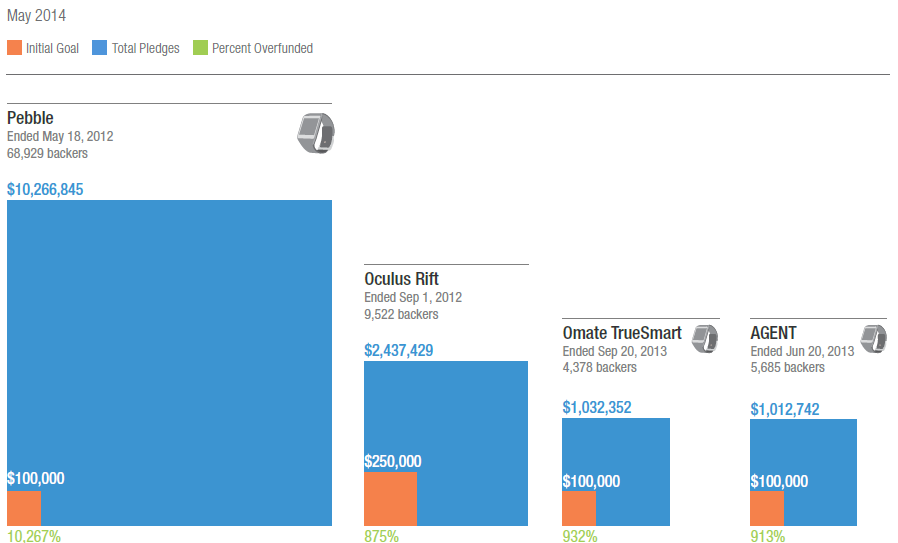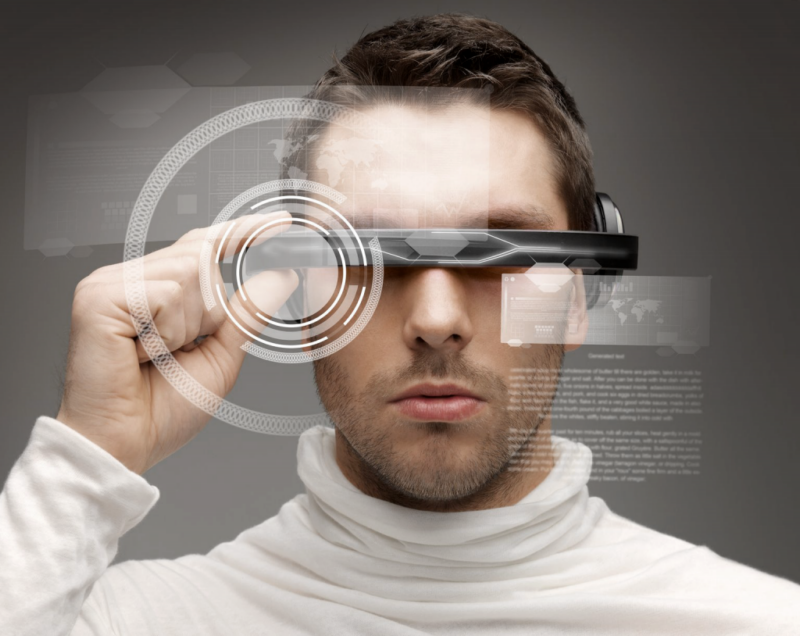What happens to the smart wearables?

At the dawn of the emergence of the “smart accessories” market, it seemed that manufacturers artificially “dispersed” the topic, trying to arouse the interest of consumers. Groping new markets is a continuous search process, an impetus for the development of new technologies and the inevitable failure of many products. We are used to seeing how IT giants first loudly announce an unusual product, then slowly and bashfully stop its production, without meeting any real interest among consumers.
What happens to "smart things" not in the scale of our personal views, ranging from the category of "fashionable, but useless toy" to "really necessary thing"? The market shows a steady growth in demand, which can no longer be attributed to the artificially stirring up hype.

')
Something is missing here ... Accelerometer?
In 2007, an international team of archaeologists found shell jewelry in Morocco, which is 82,000 years old. According to scientists, decorations indicate a growing sense of self-analysis and self-identification of a person during the transition to a new level of social development. "Wearable trinkets" tell us about the significant impact of culture on human development.
Throughout human history, jewelery has been used to identify style, attractiveness, social status, etc. in a carrier. After 820 centuries, the desire to decorate oneself has not disappeared anywhere, only the “beads” have become more “clever”, thanks to the filling of various sensors. High technologies have become not just "fashionable", they are integrated into the fashion itself. Garments, glasses, sports equipment, watches - literally all our things turn into innovative gadgets.

The picture shows an invisible transparent smartphone? No, just wearable accessories.
When it comes to smart gadgets, they usually represent sports trackers, smart watches, smart cameras and goggles. The largest share of the market is occupied by sports trackers - by the end of 2013, their share in world sales was 60%. It is not surprising if we recall that the history of gadgets used to control the duration and quality of training dates back to the 70s of the last century, when the first wireless ECG heart rate monitor was created for the Finnish national ski team. It is also worth mentioning the first electronic watch, released in 1972. The market for sports gadgets has matured so long that their first consumers today, using fitness gadgets, assess the risk of a heart attack and stroke.
The second most popular wearable gadget is portable cameras with a share of about 12%. Smart cameras are still waiting for their Leo Tolstoy, who would describe the history of the breakthrough to the market for these devices, but it seems obvious to link their success with the history of Woodman Labs, who presented the first GoPro camera ten years ago. By the way, GoPro Hero 1 was attached to the hand in the manner of a smart watch.

The graph shows the growth forecast of the market of "smart gadgets" in key categories. Source of
| Worldwide sales | 2013 | 2014 | 2015 |
|---|---|---|---|
| Sports trackers | 32,460,000 | 42,640,000 | 57,420,000 |
| Wearable camera | 6 640 000 | 13,610,000 | 15 810 000 |
| Smart glasses | 10,000 | 2 130 000 | 10 570 000 |
| Smart watch | 1 230 000 | 7,440,000 | 24,920,000 |
| Other devices | 13,560,000 | 24 180 000 | 55,480,000 |
| TOTAL | 53 900 000 | 90,000,000 | 164,200,000 |
Growth forecast in numbers (pieces). Own data.
The fuel to the fire of the smart-fire poured glasses Google Glass, the entire past year did not descend from the editorial media. Samsung introduced its “smart” watches, iHealth, Huawei Honor, Lifesense and Codoon looked at the light. Apple and Microsoft do not stop rumors about their smart bracelet designs. Companies that have not grown up in the wilds of Silicon Valley have entered the market: Nike tracks sporting results, fashion designer Tory Burch has made a smart decoration for fitness, Levi's and his designs are breathing in their backs.
Against this background, supporters of the development of smart wearables claim that only those who do not have it do not believe in the prospects of smart watches. Opponents cite research that users stop using wearable devices six months after purchase.

Kickstarter is often called the smart wearables incubator. Top projects collect crazy money and are very popular among users. Look, all these products got on the review to users of a habr: Pebble , Oculus Rift , Omate TrueSmart , thousands of them .
In Russia, the distribution of the smart gadget market is similar to the global one. Global trendsetting of a healthy lifestyle and active recreation did not pass by our country, moreover, their relative availability for consumers affected the wide popularity of such devices. If we translate the growing interest into numbers, we get the following data for 2013: about 54 million “smart” accessories were sold in the world, in Russia - about 60 thousand smart wearables worth about 400 million rubles. A drop in the sea of consumer devices, yes? But it is important for us to see the dynamics. The fact that the smart wearables market is still at the initial stage of development, both in the world and in our country, is clear without any analytics. It is interesting to know if he will not blur in a year, lapped by the next wave of high-tech fashion. Who will need "smart" watches if they start selling 3D printers and quadcopters in a nearby hozmage.
Now the fun part. Our experts believe that the average cost of devices will not change until the end of the year, and will be about $ 200. Changes will begin in 2015, when the price of devices will begin to decline markedly under the influence of increased competition. New brands will start entering the Russian market. In addition to the "smart" watches Samsung and Sony, Qumo and Nillkin gadgets are already represented today. The spread of smart devices on Android from major brands will spur expansion and the rest. A similar situation is in the segment of sports bracelets, where brands Prestigio, FitBug, Oregon Scientific are already present.

With such a thing, "smart watch" is no longer needed.
Gadgets will not only be cheaper, but also more useful. The functionality and power of “smart” accessories will constantly grow, and more and more sophisticated smart wearables on various operating systems will continue to appear on the market. The growth of the smartphone market will only spur this process, because wearable devices, expanding functionality and mobility, are acquired primarily by smartphone owners worth 10 thousand rubles and more - the share of such smart phones on the Russian market in the first half of 2014 was about 28% in real terms and 60% in cash flow.
As a result, already in 2014, more than 220 thousand “smart” accessories will be sold in Russia for more than 1.5 billion rubles. Sales in units and in rubles will increase by 3.8 times compared with the previous period. The global market may reach 90-100 million (and even more) of sold wearable devices this year, which is 1.6 times more than a year earlier. Thus, the dynamics of sales of such gadgets in Russia will significantly exceed the world.
Source: https://habr.com/ru/post/233881/
All Articles